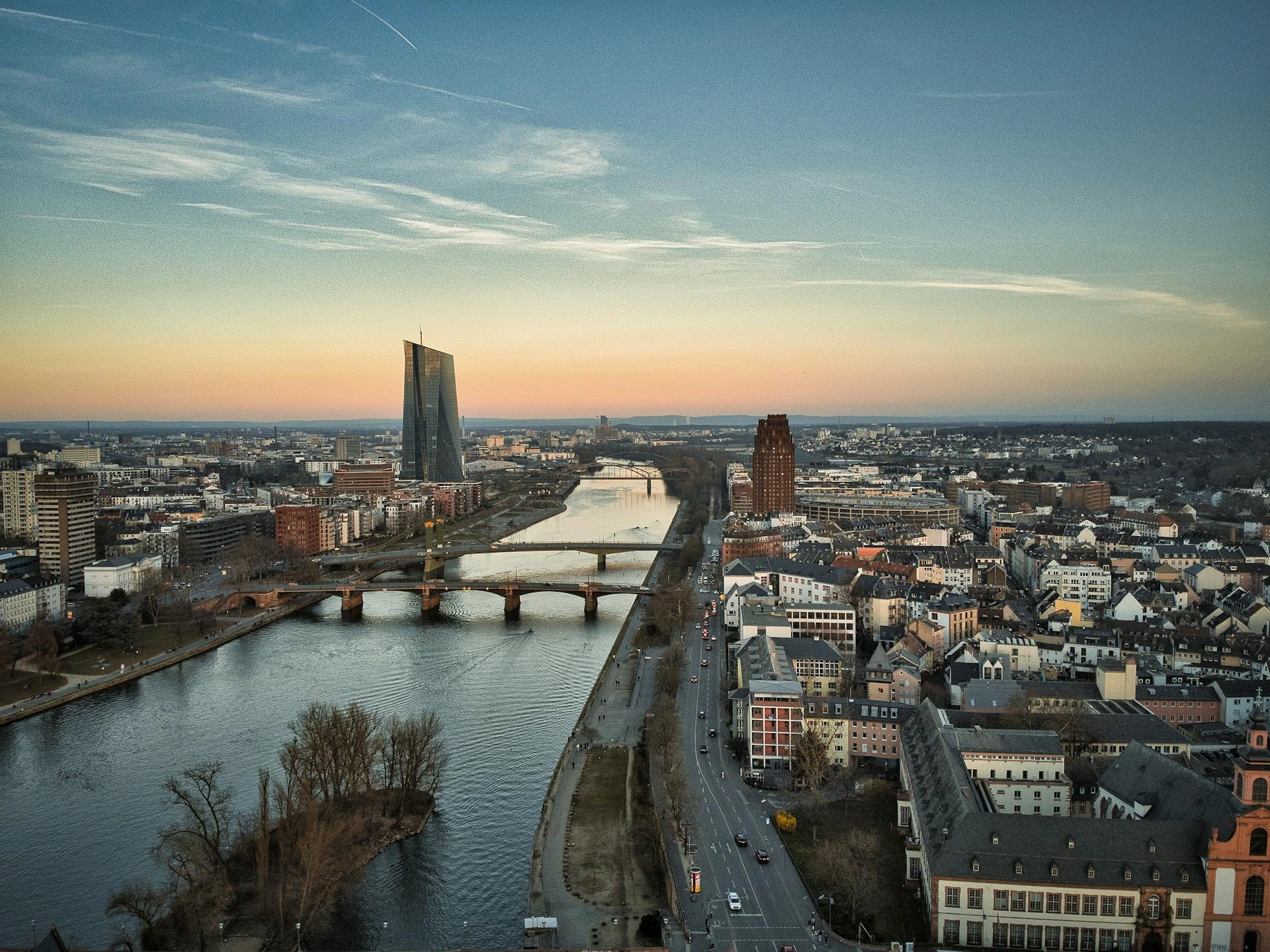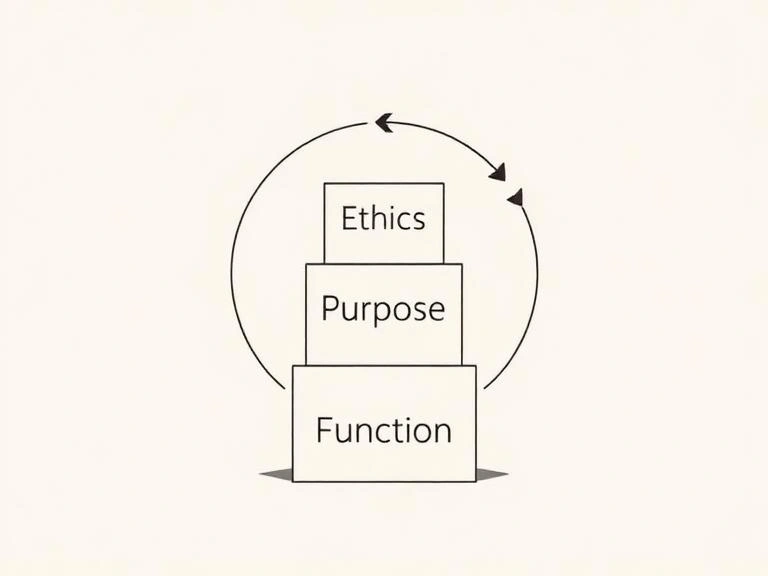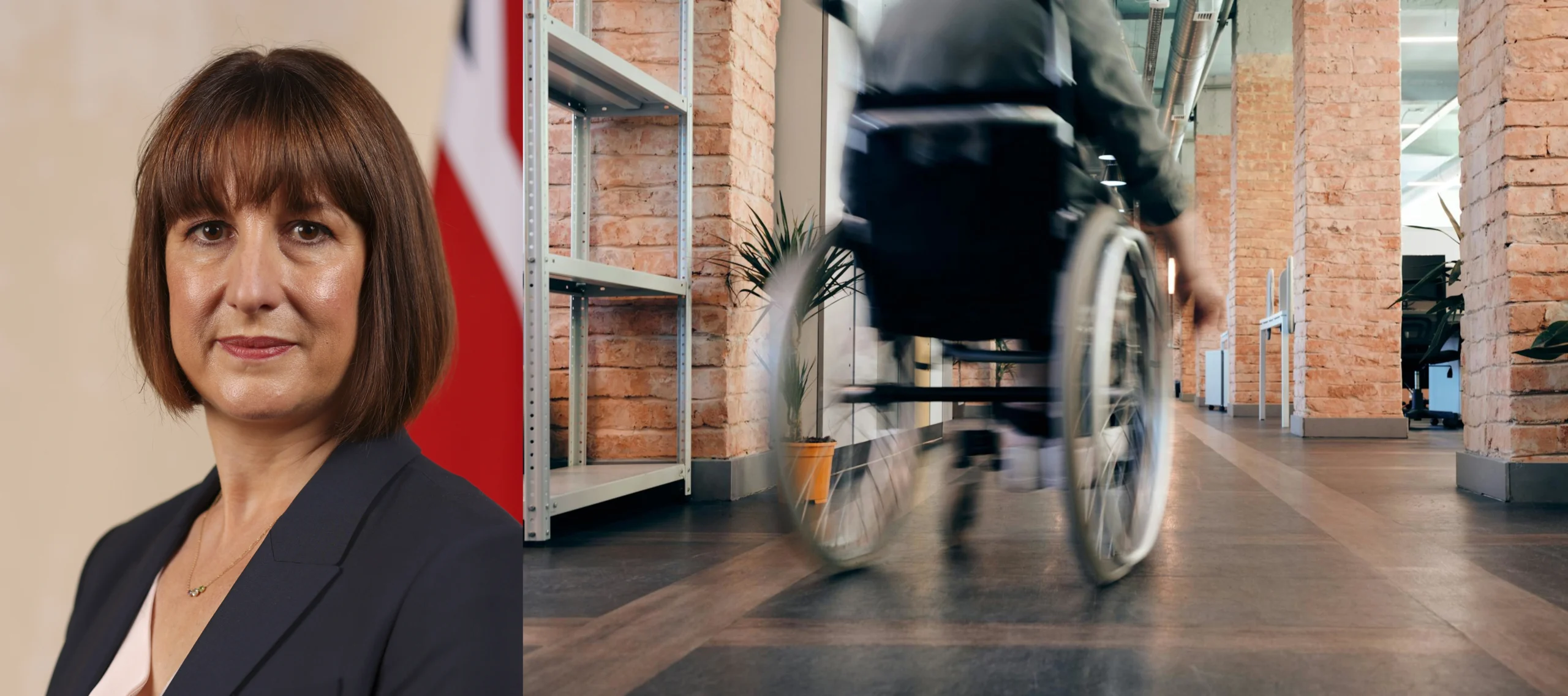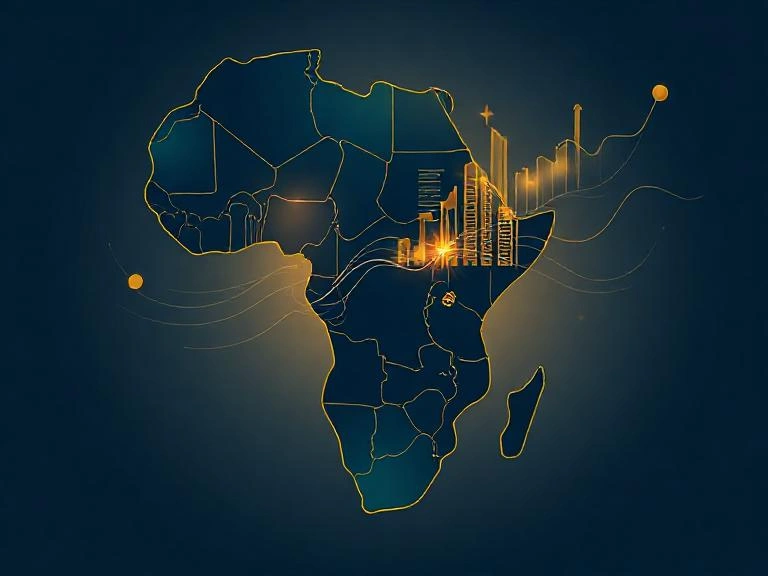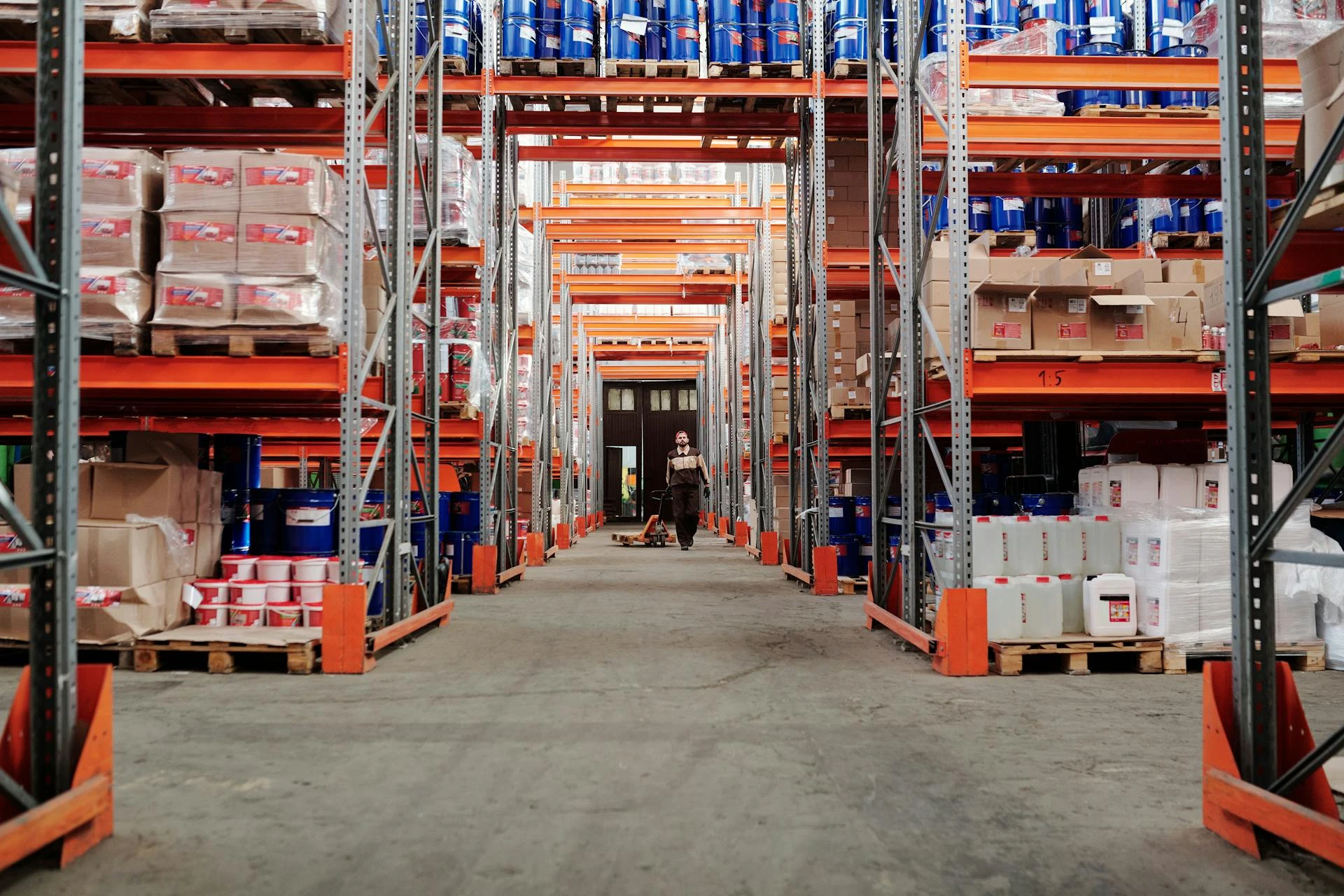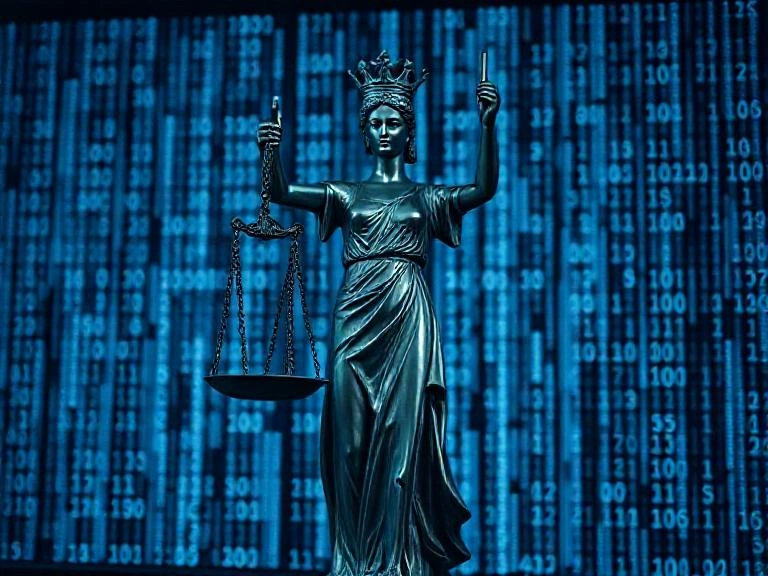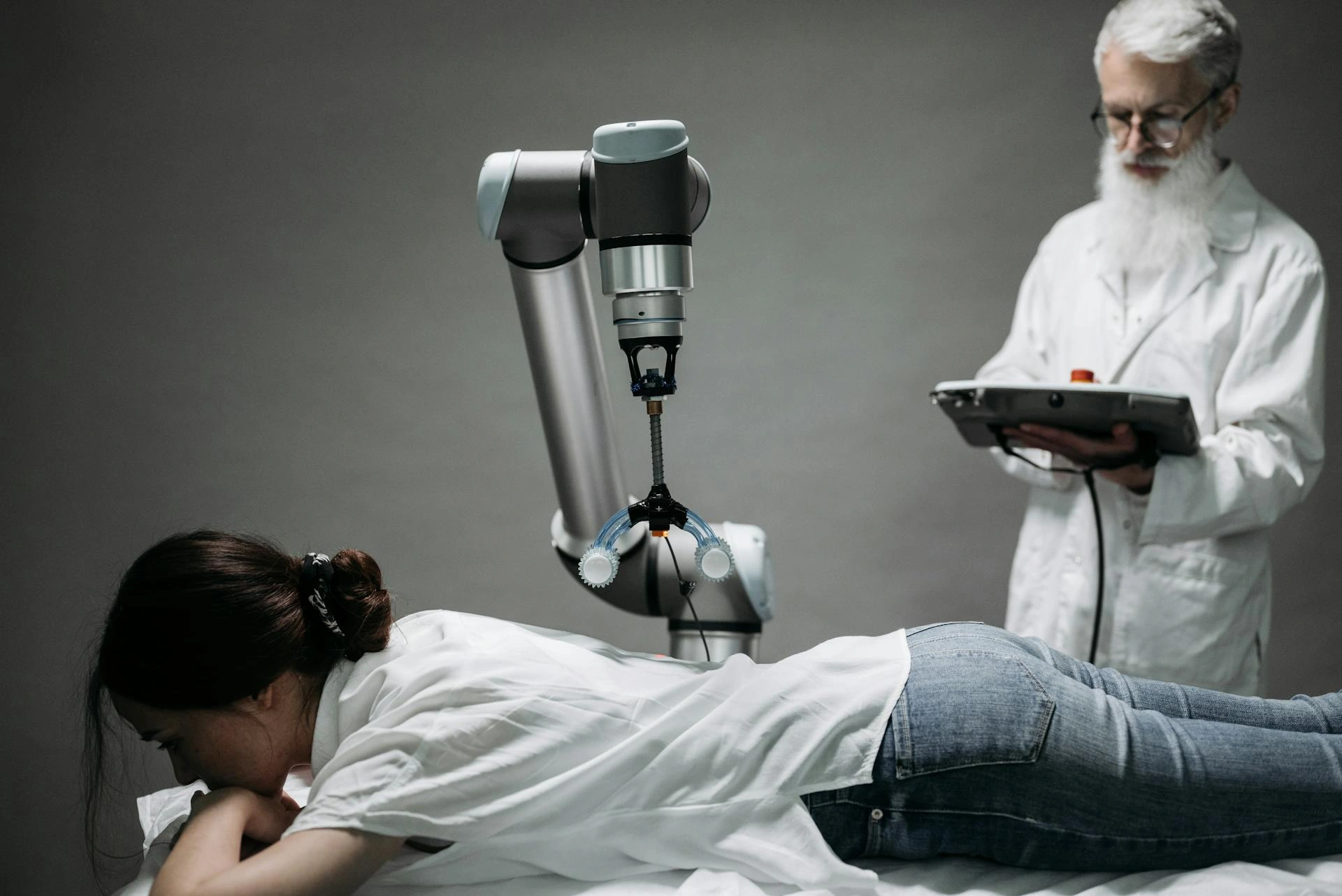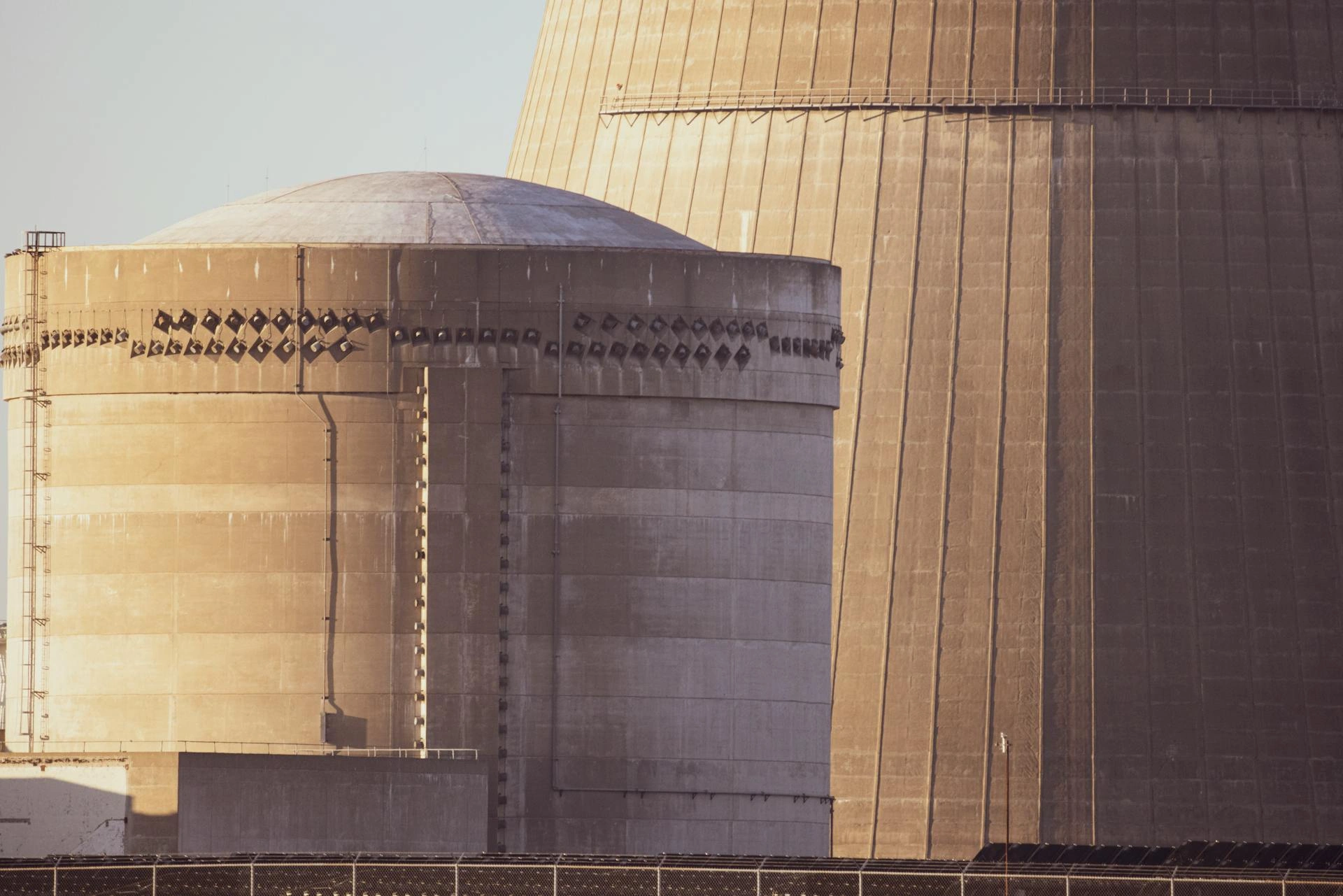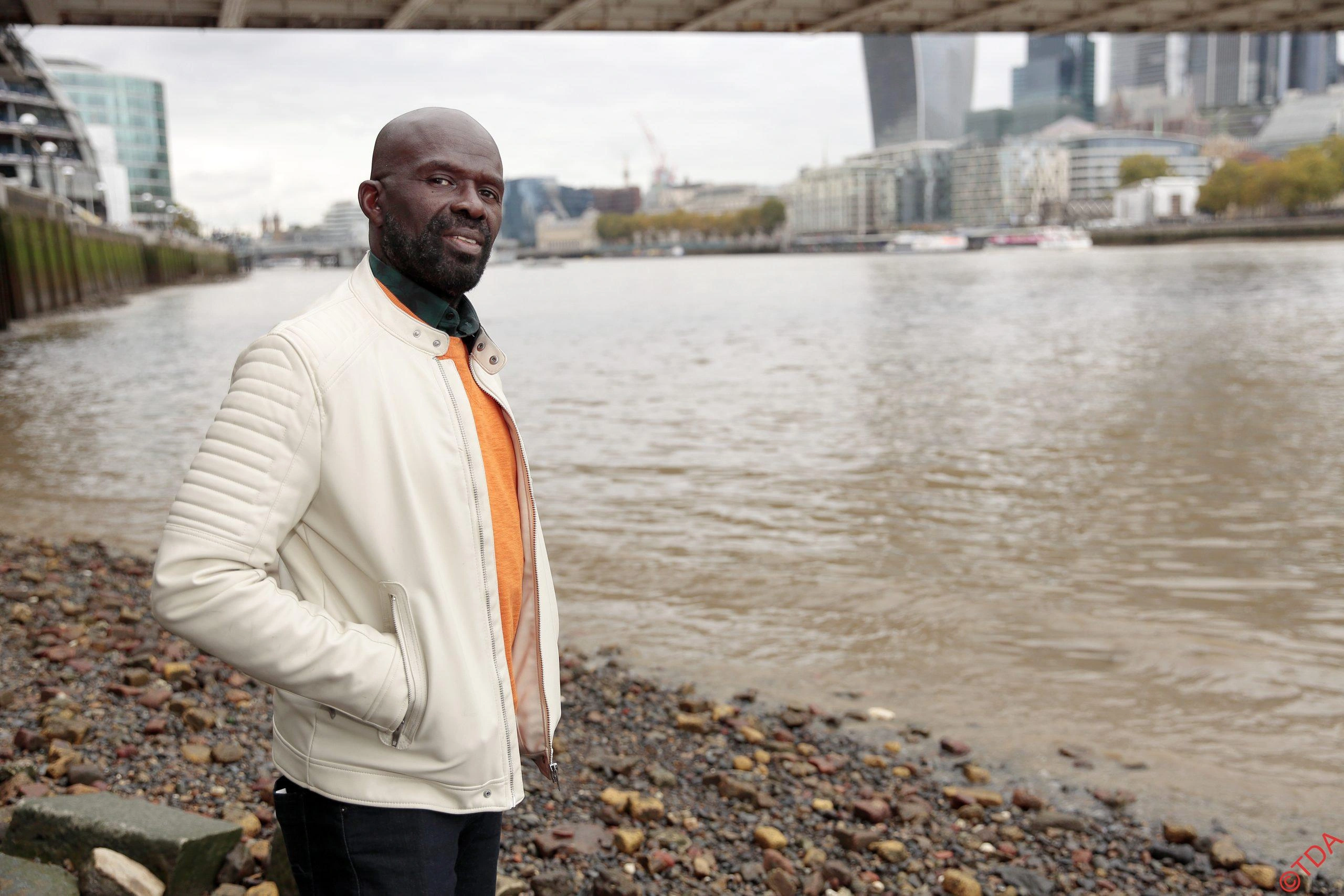Meet the Crimefighters of 2055 – the Bots in Blue

Phil Cleary
- Published
- Opinion & Analysis
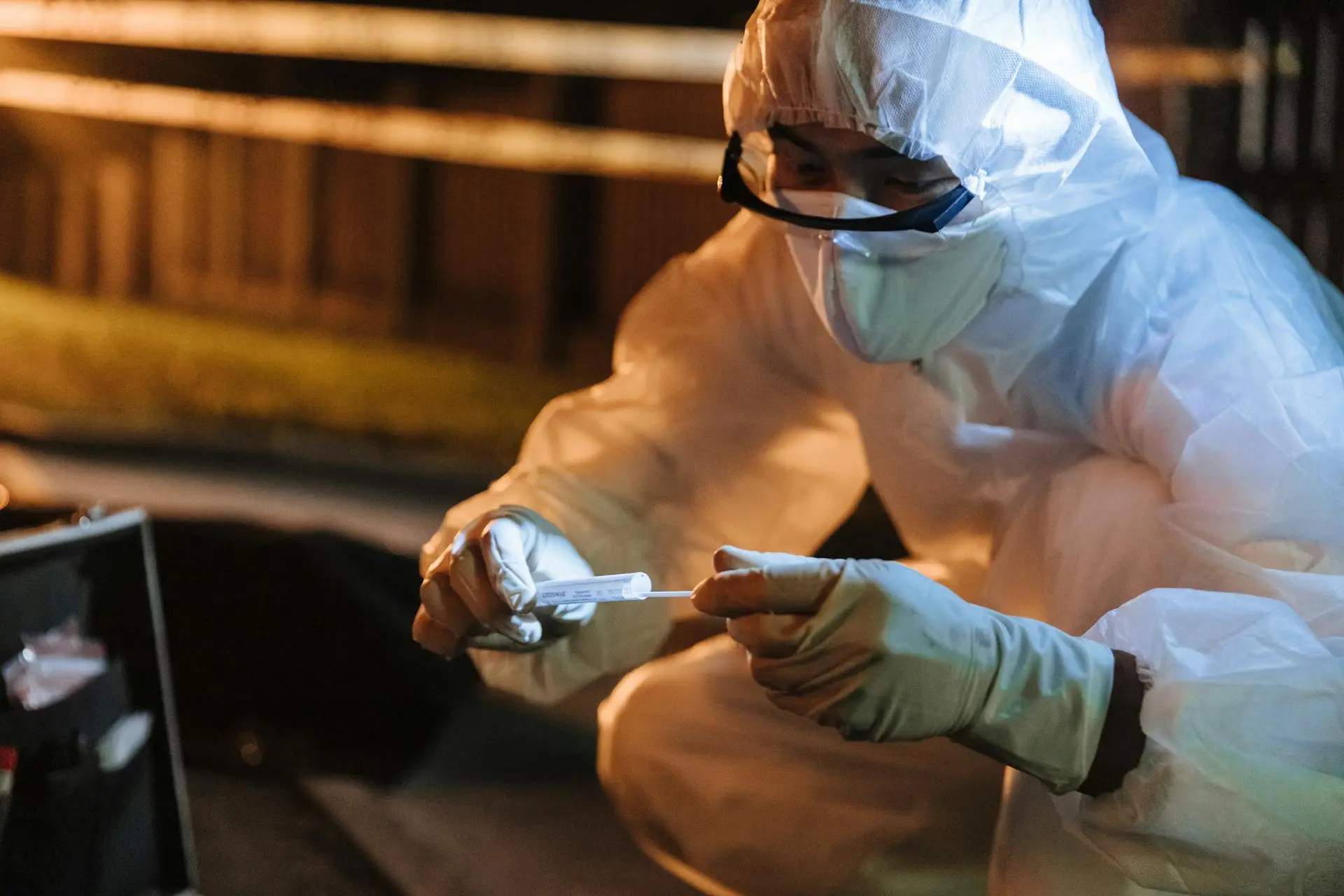
Robotic police units, forensic AI and drone swarms could soon mean no criminal gets away. Tech pioneer and former police officer Phil Cleary sees a future where justice is instant
A few decades ago, I remember watching Star Trek and marvelling at Captain Kirk’s wristwatch communicator.
Back then, it felt like a fantasy. Fast forward to today and not only do we wear phones on our wrists but we are also on the cusp of a revolution that could make something even more radical a reality: a world where crime is virtually impossible.
And as a former police officer, this is what I want to see. Back in the 1990s, my brother Mike and I created SmartWater — a forensic solution that allowed police to prove a suspect’s guilt even months after the crime. We’d found a way of ‘branding’ burglars, so that even if they got away on the night, they could be traced, tested, and convicted later. The idea was simple: make it impossible to hide.
Looking back, SmartWater was the first generation of crime-fighting machines. Tomorrow’s law-enforcement tech will take things to a whole new level. In just 30 years, so by 2055, I firmly believe it will be so advanced that getting away with a crime, any crime, will no longer be conceivable.
Robots aren’t just vacuuming your floors or riveting cars anymore. In 2018, I acquired a company that produced robots designed to protect construction sites. They are battery-operated, have all-around visibility of the site, and send videos to a control room if they detect any movement during the night. They never fall ill or doze off, and can even shout at intruders to scare them away. Compared to the costs of a security guard, our robots save companies thousands every week.
By 2055, robotic cops, or “robo-cops,” will patrol our streets, tirelessly enforcing the law without fear or favour. These mechanical officers will be equipped with advanced sensors, night-vision capabilities, and superhuman strength, making them impossible for criminals to evade or overpower. They’ll be programmed with flawless knowledge of every law, instantly recognising violations and responding with lightning-fast efficiency. And, of course, they have back-up in the form of ‘Drone Swarms’.
Drones of various sizes will, likewise, be buzzing silently overhead, scanning crowds and pinpointing criminals instantly. For example, imagine a fight is brewing. Threats are made. Neighbourhood drones alerted by the noise swarm to the scene and start observing and recording. Knives are brandished. That’s an offensive weapon, so the drones recognise that a criminal offence has been committed. They immediately respond. The drones, some no bigger than bees, spin around the knifeman in a synchronised blur, releasing thousands of fine strands of near-indestructible Kevlar that traps their arms and legs. Nobody was stabbed, and the offender has been safely detained with a complete file of evidence instantly available for the courts to issue swift justice.

Picture a crime scene from my day, say, a suspected murder. It would be buzzing with activity. Gnarled detectives scribbling notes on notepads, interviewing witnesses, standing aside for Scenes of Crime officers (SOCOs) to take photos of the scene, look for fingerprints and blood samples to send to the lab.
First, was it even a murder? I mean, the victim could have accidentally stabbed himself in the back fifteen times. Is the blood found at the scene from the victim or perhaps from the offender? With the forensic laboratories inundated, it would take weeks to find out, by which time the detective’s ‘In tray’ would have been filled with other urgent enquiries. Worse, the offender could have left the country weeks earlier and been sunning himself on a beach somewhere we don’t have an extradition treaty.
But let’s fast-forward a couple of decades from now to the same suspected murder scene. A technician sets up a sleek AI robotic system that starts scanning the scene with laser-like accuracy, identifying, then providing instant DNA and spray pattern analysis.
You won’t see men in white suits at crime scenes anymore. No SOCO vans, no tape around the perimeter. Instead, forensic bots will handle everything.
The truth is, even the best-trained Scenes of Crime Officers can and do miss evidence. Sometimes it’s fatigue, sometimes it’s pressure to clear a scene quickly, and sometimes it’s just the sheer volume of material to sift through. Tiny fibres, partial prints, or faint blood spots can be overlooked. In some tragic cases, justice has been delayed by years as a result.
Forensic bots won’t make those mistakes. They’ll sweep every inch of the scene with microscopic precision, detecting flakes of skin, hairs, fibres, even the barest trace of DNA. Nothing will be missed. Even half a fingerprint will be enough as AI will reconstruct the rest using millions of stored data points. With forensic databases fully integrated, matches will take seconds. Human error will be all but eliminated.
At the same time, other forensic bots will insert rectal temperature probes into the victim to determine the ‘Algor Mortis’ (cooling of the body) and the time of death. In our scenario, medical analysis by robots confirms murder. Databases are automatically checked for ‘hits’ on the identified DNA and fingerprint.
Within seconds, a suspect is identified, warrants for arrest are created, and countrywide CCTV systems start scanning for facial recognition.
If the offender is roaming the streets then police drone swarms will soon spot him, descend and apprehend, binding him in Kevlar strands. But what if he tries to get away in a driverless car? There’s no need for a high-speed police chase. His identity is confirmed by the vehicle’s internal CCTV, which by law is linked to the police facial recognition system. He is flagged up as a suspect and the car automatically locks him in so he can’t escape, instead taking him to the nearest police custody suite, where he’ll be charged and remanded in custody before the day is out.
Of course, there may still be times when forensic evidence doesn’t immediately bring up a hit. No problem, though. AI will remove the need for officers to undertake labour-intensive but essential tasks in sifting for evidence and patterns. Virtual investigators will work literally around the clock, combing through CCTV, phone records, financial transactions, and social media activity to connect dots no human detective could.
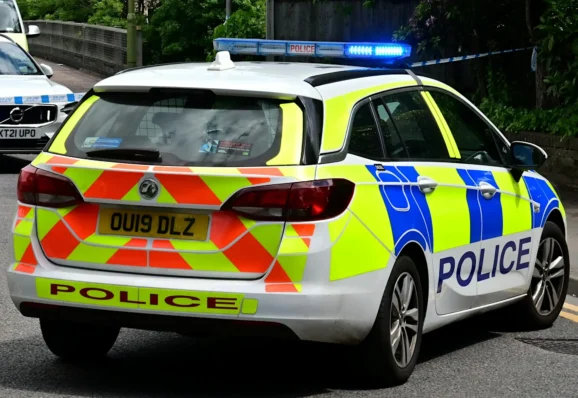
Ultimately, tech could reshape policing as we know it today so no one gets away with a crime ever again. And while it may currently sound like science-fiction, the technology is coming, fast.
The most realistic outcome isn’t replacing humans altogether, though, but a hybrid approach where AI and bots handle the laborious heavy lifting while police officers focus on interacting with the public and making the decisions that ultimately lead to criminals being put where they belong: behind bars.

Phil Cleary is one of the UK’s leading technology entrepreneurs and a former covert operations specialist in British policing. He is the co-founder and former CEO of The SmartWater Group (now DeterTech), the world’s foremost forensic marking company, whose technologies are used by millions across more than 20 countries. A Fellow of the Royal Society of Arts and a recognised expert in security and modern warfare, Phil also holds a Master’s in Military History. His debut political thriller, Elixir, has received critical acclaim for reimagining humanity’s quest for immortality as a global threat greater than AI.
Main photo, courtesy cottonbro studio/Pexels
Sign up to The European Newsletter
RECENT ARTICLES
-
 The digital euro is coming — and Europe should be afraid of what comes with it
The digital euro is coming — and Europe should be afraid of what comes with it -
 Why Greece’s recovery depends on deeper EU economic integration
Why Greece’s recovery depends on deeper EU economic integration -
 Why social media bans won’t save our kids
Why social media bans won’t save our kids -
 This one digital glitch is pushing disabled people to breaking point
This one digital glitch is pushing disabled people to breaking point -
 Japan’s heavy metal-loving Prime Minister is redefining what power looks like
Japan’s heavy metal-loving Prime Minister is redefining what power looks like -
 Why every system fails without a moral baseline
Why every system fails without a moral baseline -
 The many lives of Professor Michael Atar
The many lives of Professor Michael Atar -
 Britain is finally having its nuclear moment - and it’s about time
Britain is finally having its nuclear moment - and it’s about time -
 Forget ‘quality time’ — this is what children will actually remember
Forget ‘quality time’ — this is what children will actually remember -
 Shelf-made men: why publishing still favours the well-connected
Shelf-made men: why publishing still favours the well-connected -
 European investors with $4tn AUM set their sights on disrupting America’s tech dominance
European investors with $4tn AUM set their sights on disrupting America’s tech dominance -
 Rachel Reeves’ budget was sold as 'fair' — but disabled people will pay the price
Rachel Reeves’ budget was sold as 'fair' — but disabled people will pay the price -
 Billionaires are seizing control of human lifespan...and no one is regulating them
Billionaires are seizing control of human lifespan...and no one is regulating them -
 Africa’s overlooked advantage — and the funding gap that’s holding it back
Africa’s overlooked advantage — and the funding gap that’s holding it back -
 Will the EU’s new policy slow down the flow of cheap Chinese parcels?
Will the EU’s new policy slow down the flow of cheap Chinese parcels? -
 Why trust in everyday organisations is collapsing — and what can fix it
Why trust in everyday organisations is collapsing — and what can fix it -
 In defence of a consumer-led economy
In defence of a consumer-led economy -
 Why the $5B Trump–BBC fallout is the reckoning the British media has been dodging
Why the $5B Trump–BBC fallout is the reckoning the British media has been dodging -
 WPSL Group unveils £1billion blueprint to build a global golf ‘super-group’
WPSL Group unveils £1billion blueprint to build a global golf ‘super-group’ -
 Facebook’s job ads ruling opens a new era of accountability for artificial intelligence
Facebook’s job ads ruling opens a new era of accountability for artificial intelligence -
 Robots can’t care — and believing they can will break our health system
Robots can’t care — and believing they can will break our health system -
 The politics of taxation — and the price we’ll pay for it
The politics of taxation — and the price we’ll pay for it -
 Italy’s nuclear return marks a victory for reason over fear
Italy’s nuclear return marks a victory for reason over fear -
 The Mamdani experiment: can socialism really work in New York?
The Mamdani experiment: can socialism really work in New York? -
 Drowning in silence: why celebrity inaction can cost lives
Drowning in silence: why celebrity inaction can cost lives

